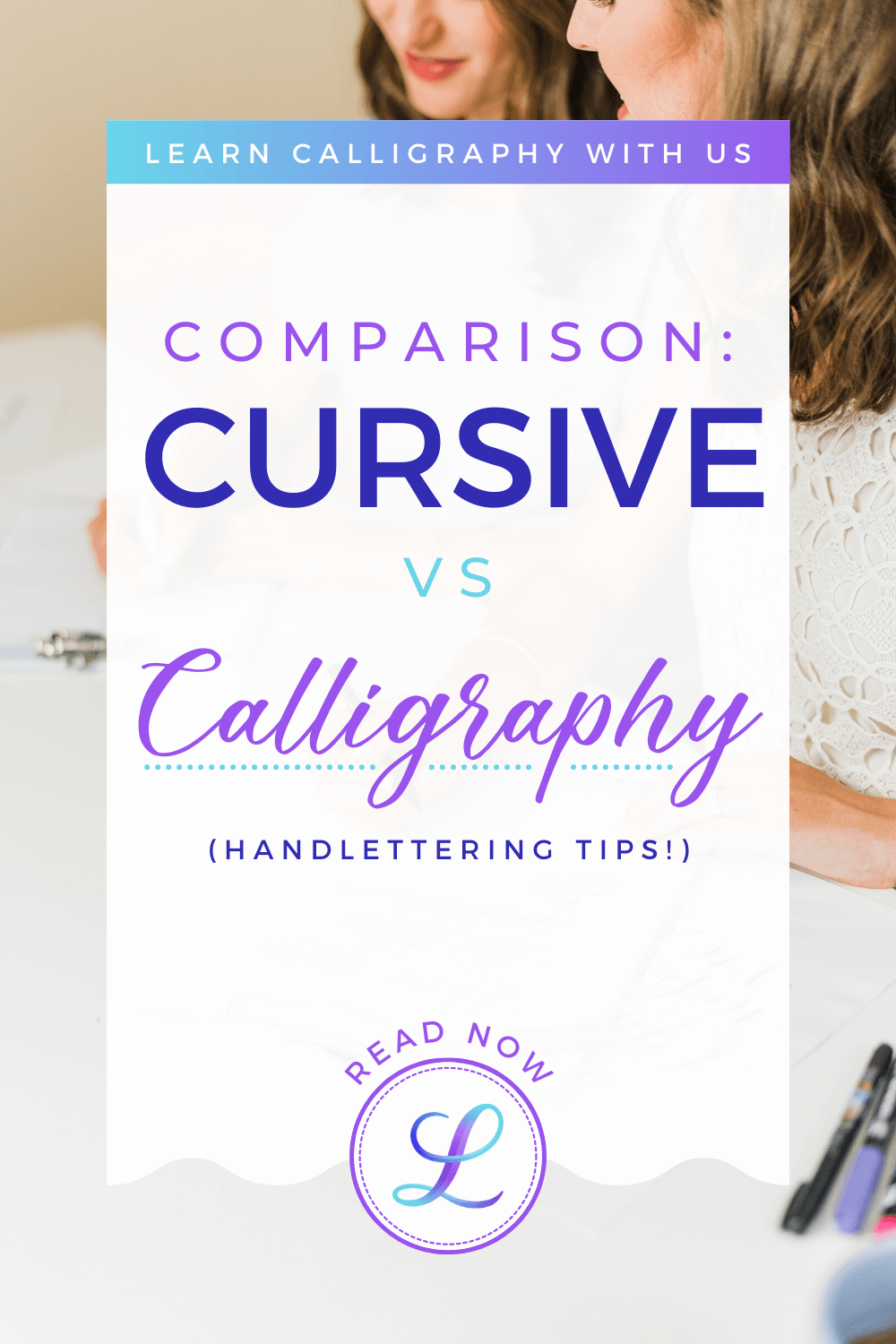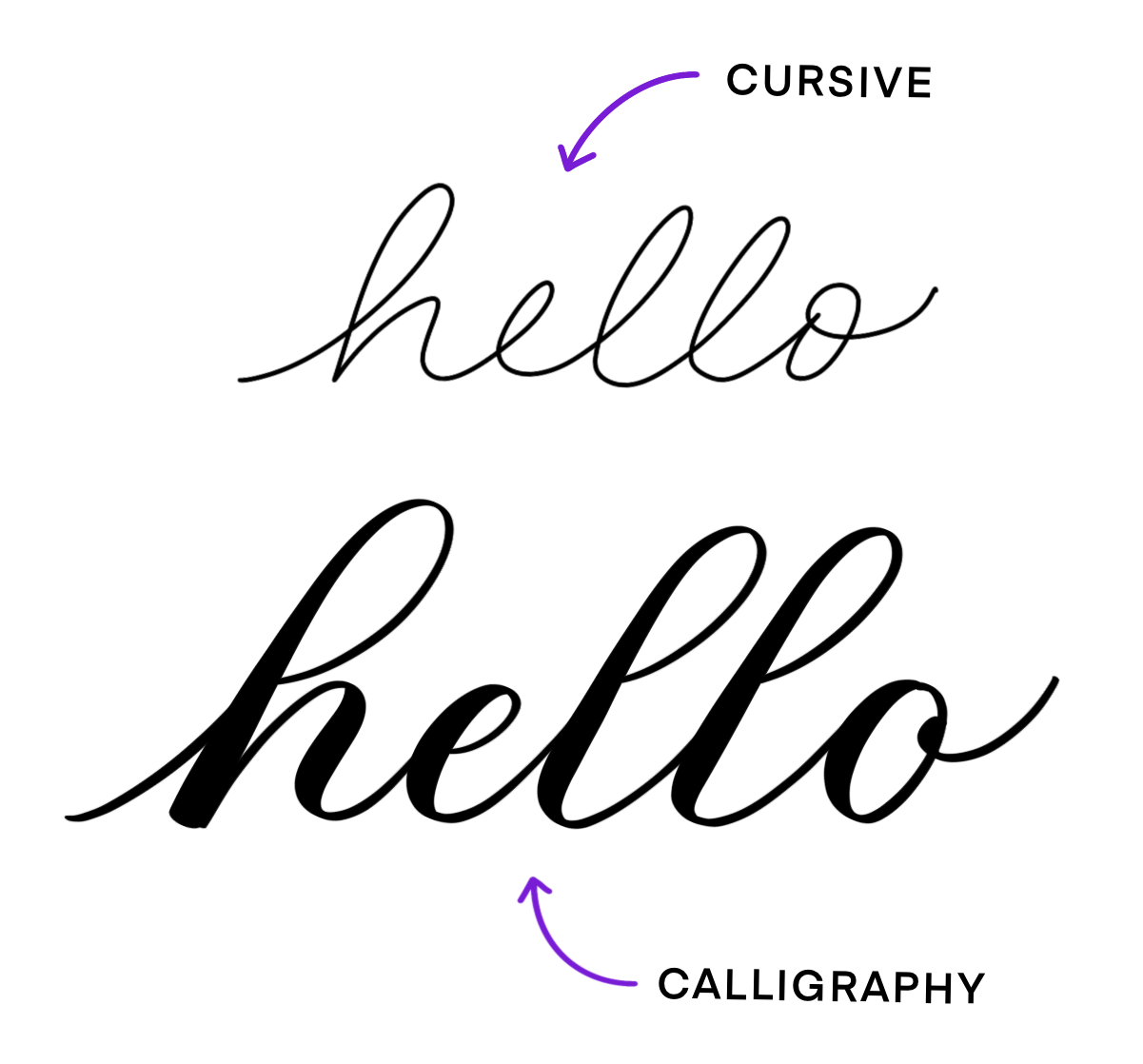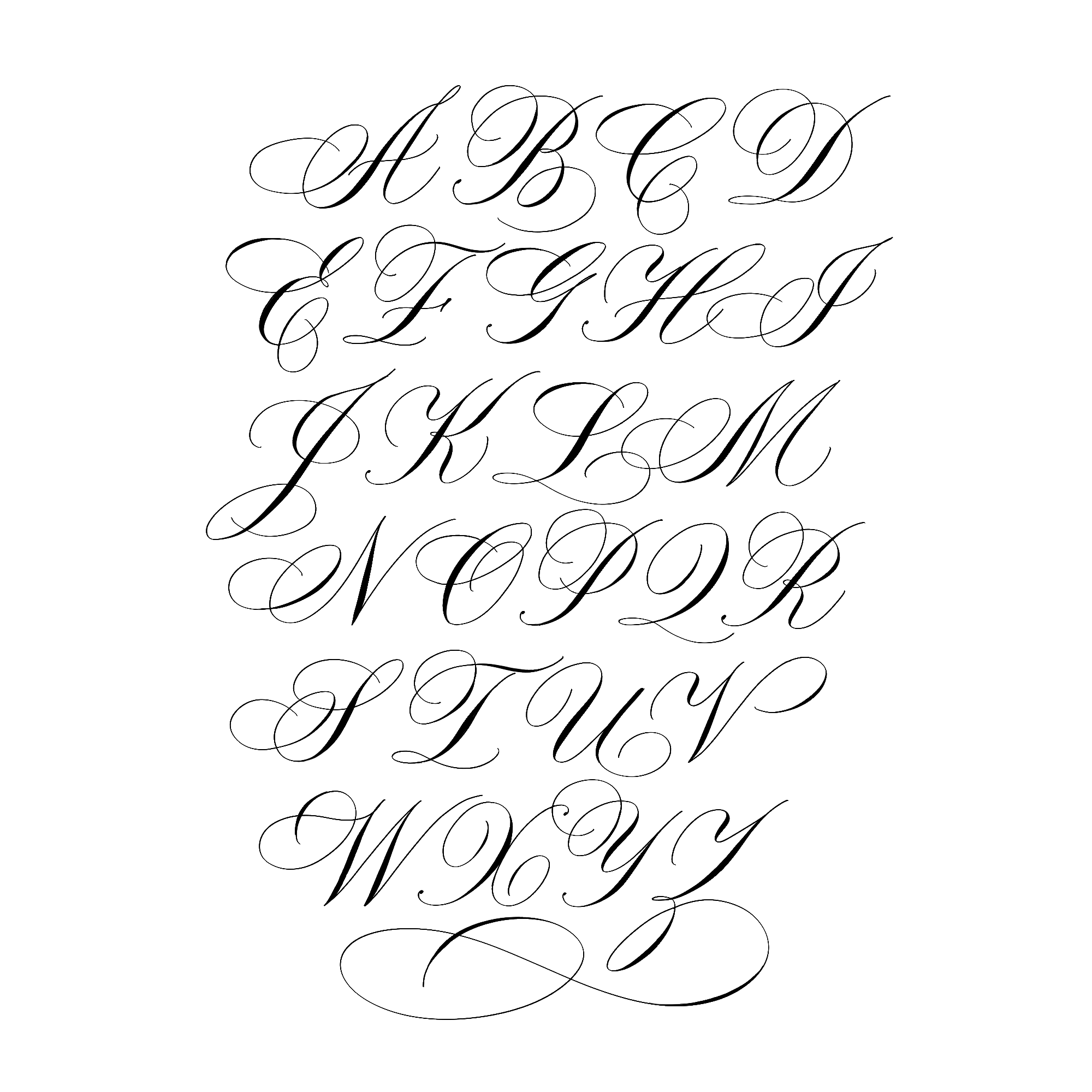Cursive vs. Calligraphy: What’s the difference?
Do you know the difference between cursive vs. calligraphy? We’re often asked if learning calligraphy is out of reach for someone who doesn’t have great handwriting, or for someone who never learned cursive.
We always answer with an emphatic, “No!”; we believe that anyone can learn calligraphy, no matter what their handwriting looks like.
This may come as a surprise since calligraphy is a beautiful and elegant script, but after teaching over 10,000 students, we’ve found it to be the truth.
Let’s look more closely at the difference between calligraphy and cursive.
Pin it for later! ↓
Table of Contents
High-Level Difference Between Cursive vs. Calligraphy
Handwriting is what we normally print with using a pen or pencil, like when you’re taking notes. Again, beautiful handwriting isn’t necessary to do calligraphy.
Cursive is a type of writing that most people learned in school. The purpose is to write quickly and legibly so that you don’t have to lift your pen off the page, resulting in letters that are connected.
Calligraphy involves drawing out the letters using specific strokes. The purpose is to create beautiful writing. Despite the fact that it requires “drawing”, you don’t need to be an artist. In fact, as long as you can create some basic curved and straight lines, you can do calligraphy.
We know there are a lot of other differences between cursive vs. calligraphy, but both can be beautiful ways to showcase the written word.
cursive vs calligraphy
We love that anyone can learn calligraphy and we encourage you to get started! The easiest way to get started is with our beginner faux calligraphy tutorial or our entire free faux calligraphy class!
Different Reasons for Using Cursive vs. Calligraphy
Children were taught cursive in grade school as an alternative to print handwriting. It’s what we use to sign our names and it’s thought to be an important part of learning and brain development in general. Today, many adults use cursive as a way to write faster than they could if they were lifting their pen off the page after every letter.
Calligraphy letters, on the other hand, take more time to create. Many people find it very relaxing because of the slower pace. Others learn the art of calligraphy so they can create beautiful, artistic scripts for wedding invitations, decorative quotes or other projects.
Take this example of the calligraphy alphabet with flourishes… it’s must more decroative than the cursive alphabet, and took longer to write.
Different Letter Construction
Though calligraphy looks complicated and intricate, it’s actually a series of simple strokes and shapes that, put together, creates letters and words. Once you know the basic strokes, you can create beautiful calligraphy projects.
Cursive, however, is comprised of the 26 letters of the alphabet. You need to learn each letter individually and how it’s formed, and be able to write them quickly without lifting your pen.
Cursive:
Calligraphy:
Notice how in calligraphy, the strokes are drawn separately and the pen is lifted after each one. In cursive, the letter was drawn in one motion without lifting. You’ll also see a big difference in the writing speed. Since each stroke is drawn individually in calligraphy, it’s much slower than cursive. Even though the letters are connected, the pen lifts off the page often.
In cursive, the pen leaves the page at the end of each word. In calligraphy, the pen lifts off of the page multiple times per letter.
Different Pens
Very different tools are used when writing in cursive vs. calligraphy. You can use any pen or pencil and paper to write in cursive. It’s best to have a free-flowing pen so the ink doesn’t skip as you are writing quickly.
You may also like: The 5 Types Of Calligraphy Pens Compared
Traditional calligraphers use high-quality paper and ink, and pens with metal nibs. Modern calligraphers trade out the ink for brush pens, similar to felt-tip markers but with a flexible tip. These special tools are used to achieve the characteristic look of calligraphy: a contrast between thick and thin strokes.
You may also like: Traditional vs. Modern Calligraphy
Want to go from normal cursive handwriting to beautiful calligraphy? We have TONS of free resources for you to learn calligraphy. Get started right away with our most popular resources:







